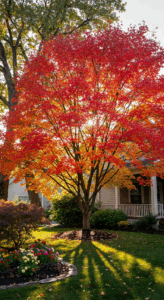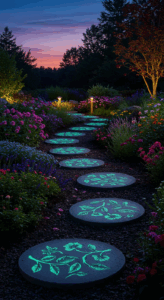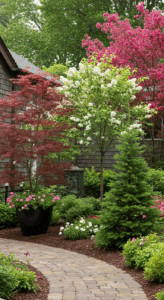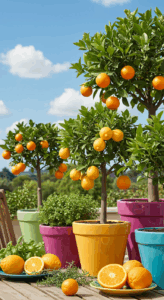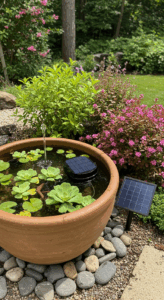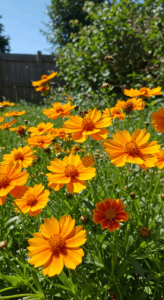1. Marigolds: Nature’s Pest Deterrent
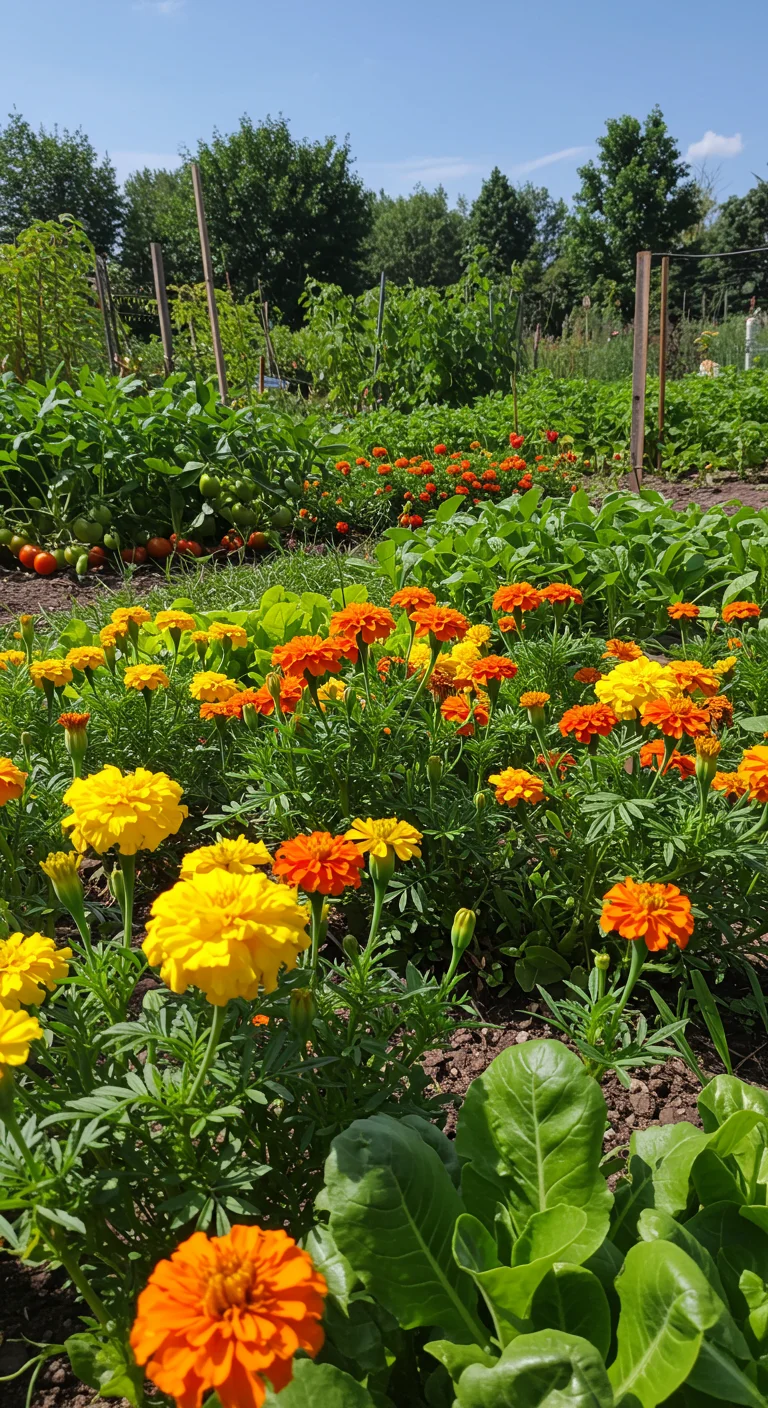
Marigolds are a fantastic addition to any vegetable garden, known for their vibrant colors and impressive ability to deter pests. These hardy annual flowers exude a natural pesticide that repels nematodes, aphids, and whiteflies, reducing the need for chemical interventions. By planting marigolds alongside your crops, you can create a protective barrier that helps maintain the health of your vegetables while also attracting beneficial insects such as ladybugs and pollinators. They thrive in full sun and can flourish in various soil types, making them an easy and effective companion plant. Not only do marigolds enhance your garden’s aesthetic with their bright yellows and oranges, but they also contribute to a more sustainable gardening practice by promoting an ecological balance.
2. Nasturtiums: Edible Beauty in Bloom
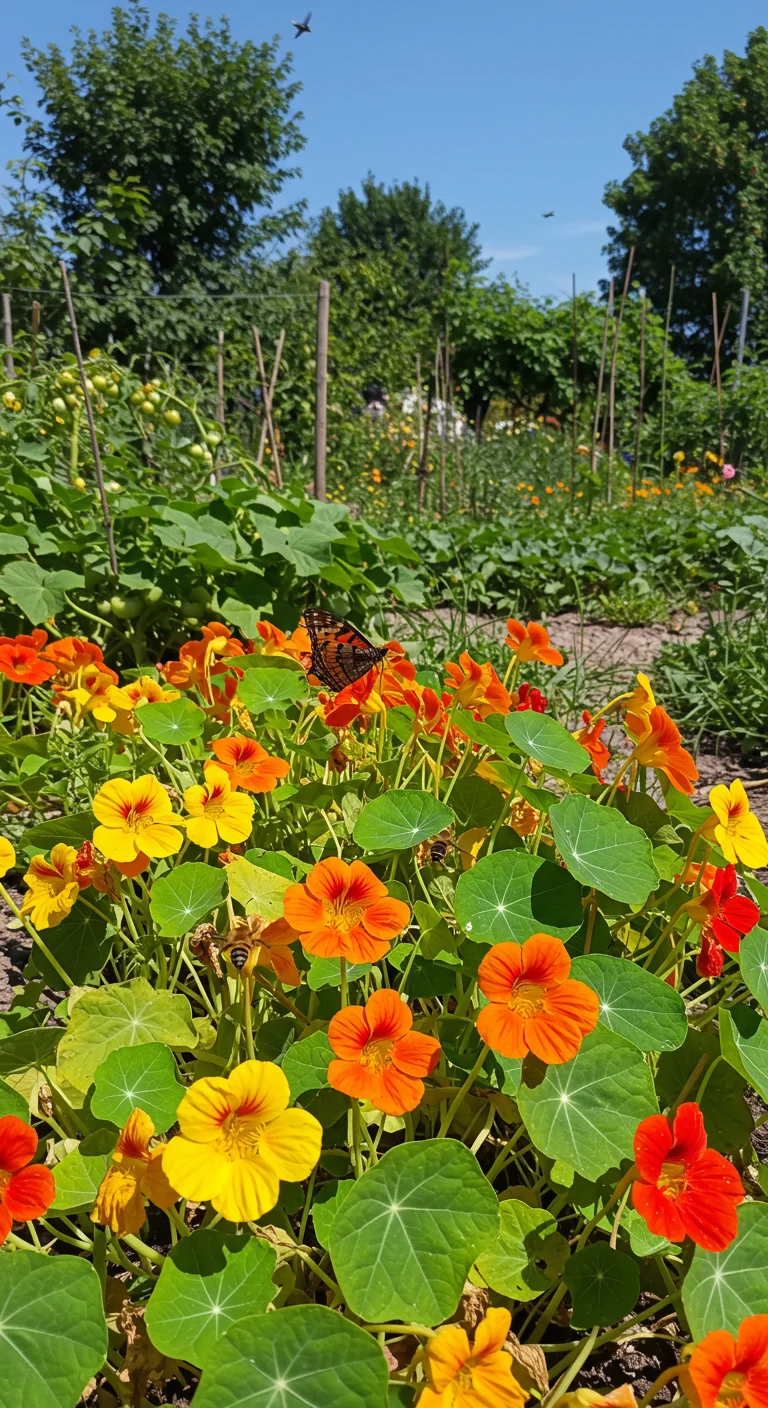
Nasturtiums are a vibrant addition to any vegetable garden, offering both beauty and utility. These hardy annuals produce bright, colorful flowers in shades of orange, yellow, and red, which not only attract beneficial pollinators but are also entirely edible. The peppery flavor of the leaves and flowers makes them a delightful garnish for salads and dishes, adding a splash of color and a burst of flavor. Nasturtiums thrive in poor soil, making them low-maintenance companions for vegetables like tomatoes and cucumbers. Additionally, they can help deter pests such as aphids and whiteflies, serving as a natural form of pest control. Plant them in full sun, and watch your garden flourish with their striking blooms and culinary potential.
3. Sunflowers: Tall Guardians of the Garden
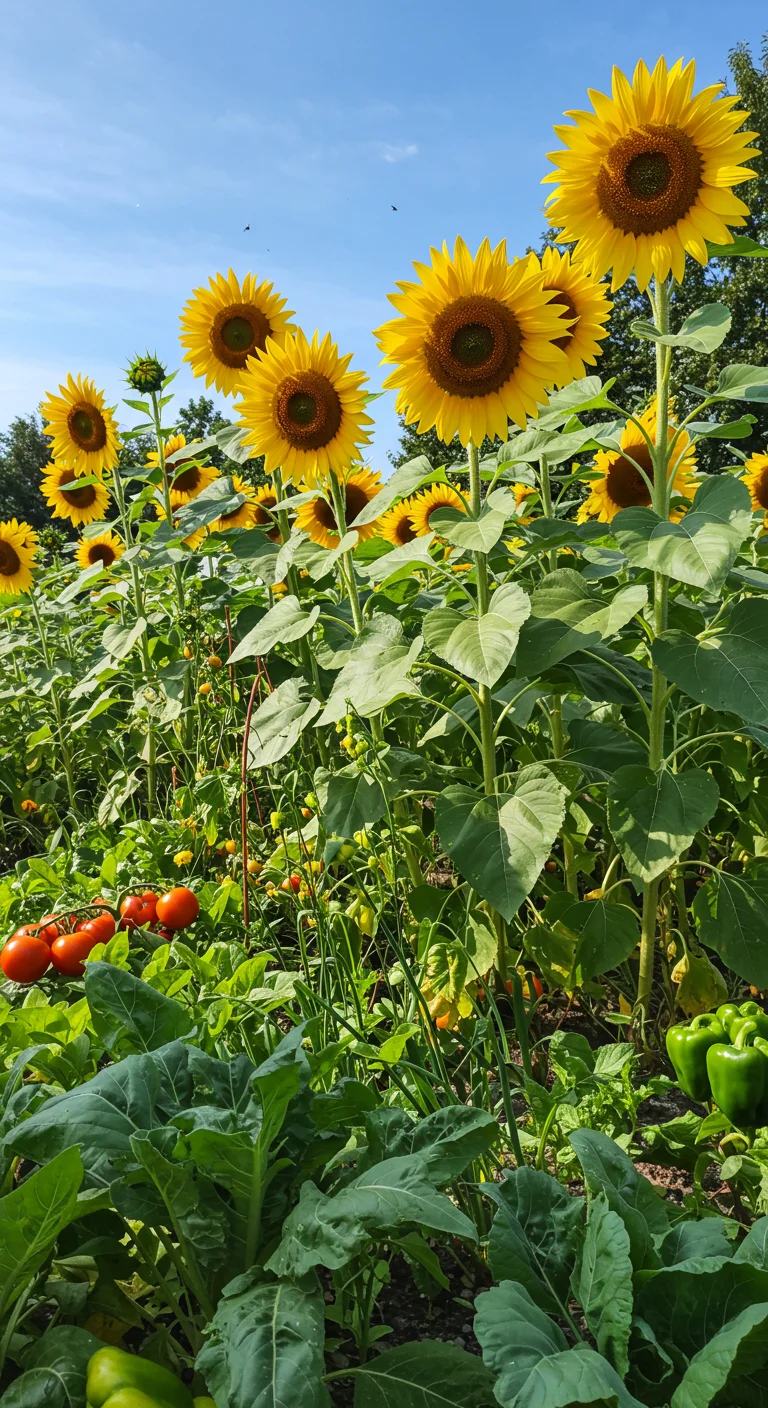
Sunflowers, with their towering stature and vibrant yellow petals, serve as both aesthetic delights and functional allies in your vegetable garden. These magnificent blooms, standing tall and proud, not only attract pollinators such as bees and butterflies, which are essential for the fruiting of many vegetables, but also act as natural pest deterrents. Their large leaves provide shade for smaller plants, helping to create a microclimate that can be beneficial during hot summer months. Additionally, sunflowers can be planted along the perimeter of your garden, acting as a protective barrier against wind and soil erosion. Growing sunflowers is relatively easy; they thrive in full sun and well-drained soil, making them a perfect addition to any vegetable garden seeking both beauty and utility.
4. Borage: The Pollinator’s Paradise
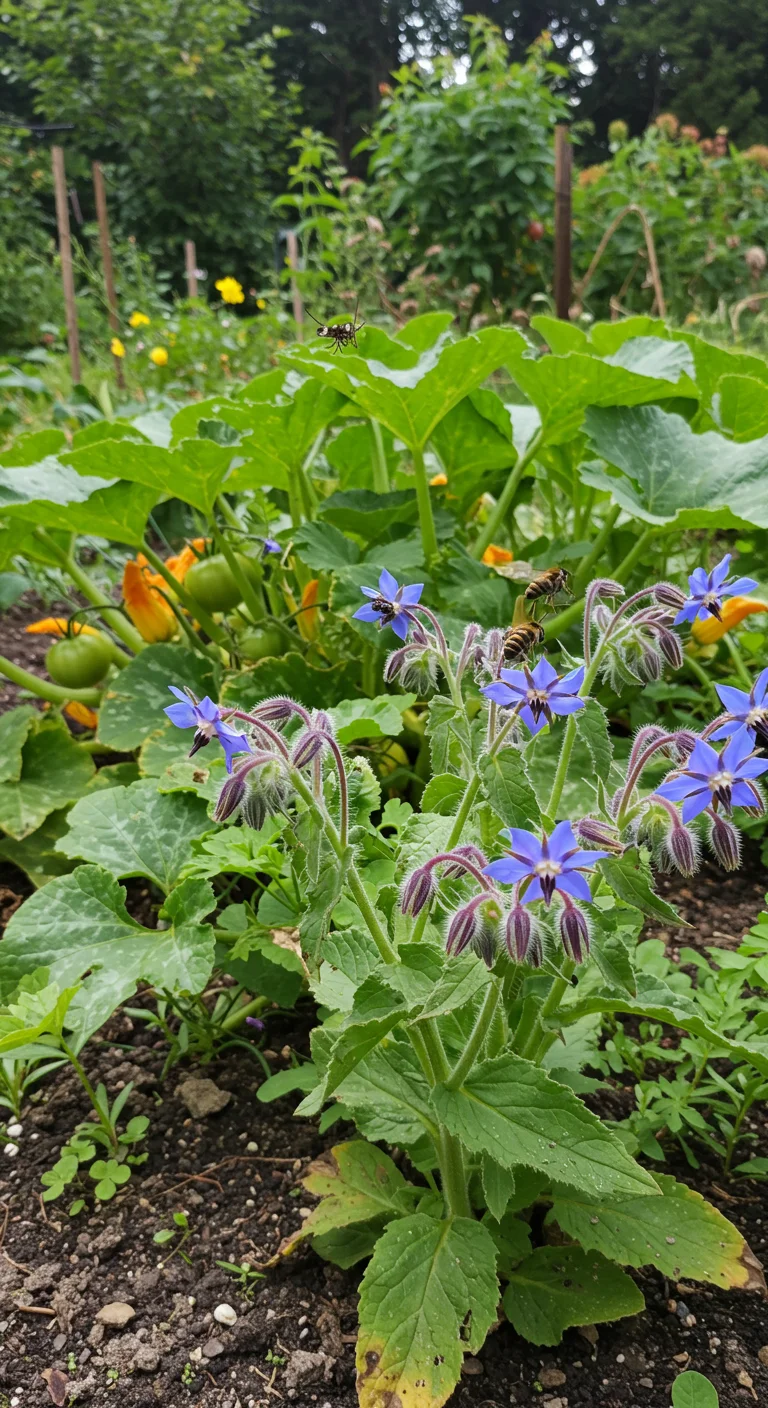
Borage, with its striking blue star-shaped flowers, is not only a beautiful addition to your vegetable garden but also a vital ally for pollinators. This herbaceous plant attracts bees, butterflies, and beneficial insects, enhancing the overall biodiversity of your garden. Beyond its role as a pollinator magnet, borage is known for its ability to improve soil health; its deep taproots break up compacted soil, allowing for better drainage and nutrient absorption. Moreover, borage leaves can be used fresh in salads or as a garnish, providing a mild cucumber-like flavor. Planting borage near tomatoes, strawberries, and squash can boost their yields due to increased pollination, making it a practical choice for any vegetable gardener aiming to support both productivity and ecological balance.
5. Zinnias: A Burst of Color and Vitality
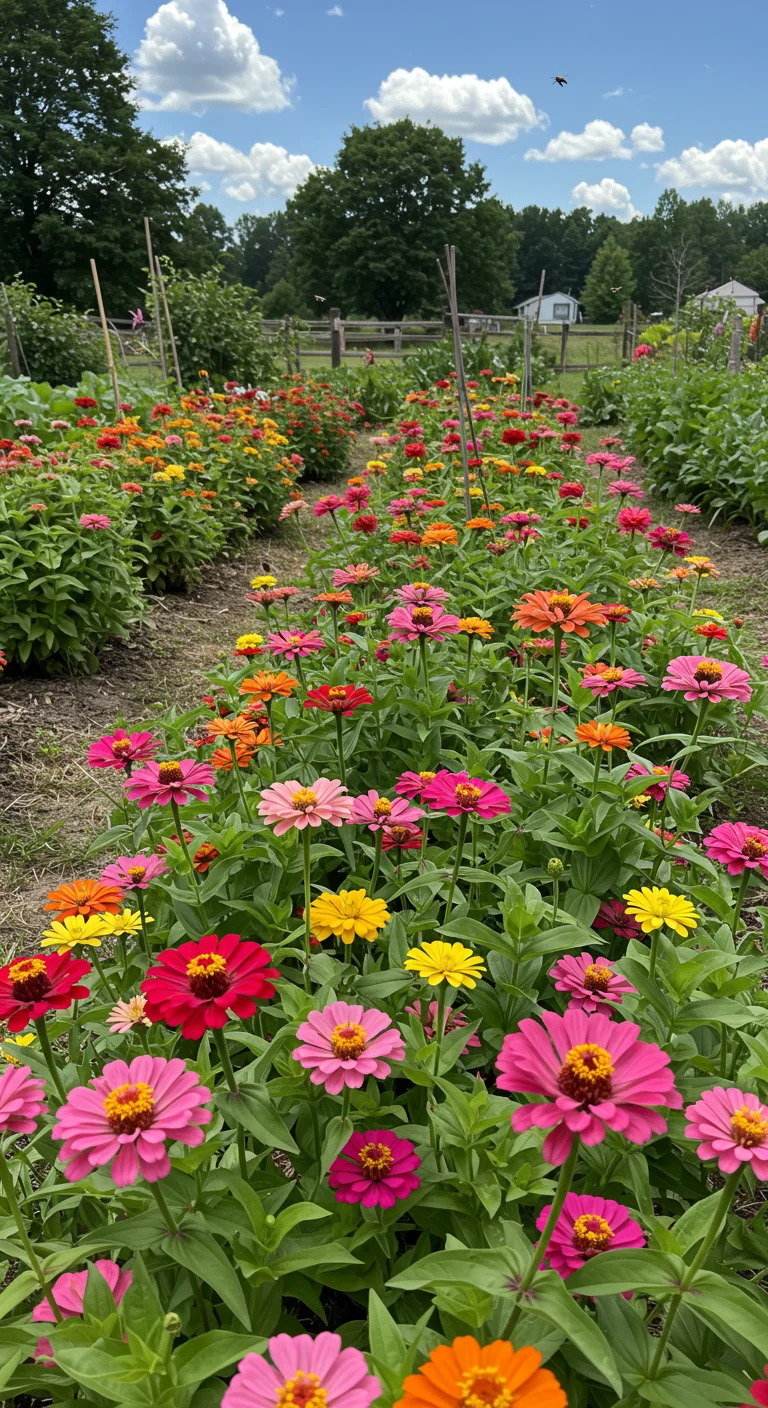
Zinnias are a vibrant addition to any vegetable garden, bringing a burst of color and vitality that can enhance both aesthetics and productivity. These hardy annuals thrive in full sun and bloom from summer until frost, attracting beneficial pollinators such as bees and butterflies, which can improve the overall health and yield of your vegetable plants. With a variety of colors and heights available, zinnias can be easily integrated into any garden layout, providing a cheerful contrast to leafy greens and earthy tones. They are also low-maintenance, requiring only well-drained soil and regular watering, making them an excellent choice for novice gardeners looking to add a splash of color without much fuss.
6. Calendula: Healing Blooms for Your Harvest
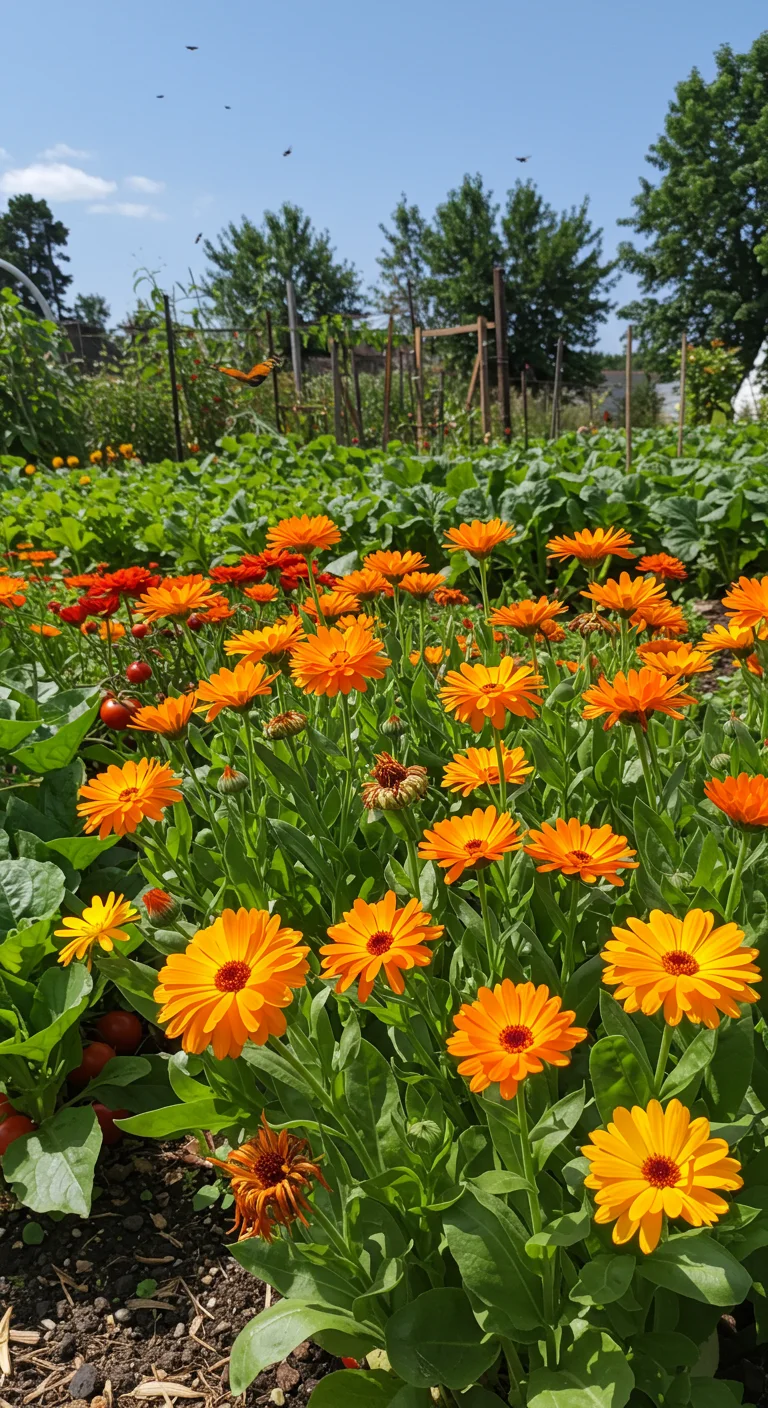
Calendula, often referred to as pot marigold, is a vibrant and versatile flower that offers numerous benefits for your vegetable garden. Renowned for its bright orange and yellow blooms, calendula not only attracts pollinators like bees and butterflies, enhancing biodiversity, but also serves as a natural pest deterrent. Its flowers can be harvested and used in salads or as a natural dye, making it a dual-purpose addition to your garden. Additionally, calendula has medicinal properties, with its petals known to promote healing and soothe skin irritations. Planting calendula alongside vegetables can improve overall plant health and yield, making it an essential companion flower for any gardener looking to create a thriving and harmonious ecosystem.
7. Sweet Alyssum: A Fragrant Companion Plant
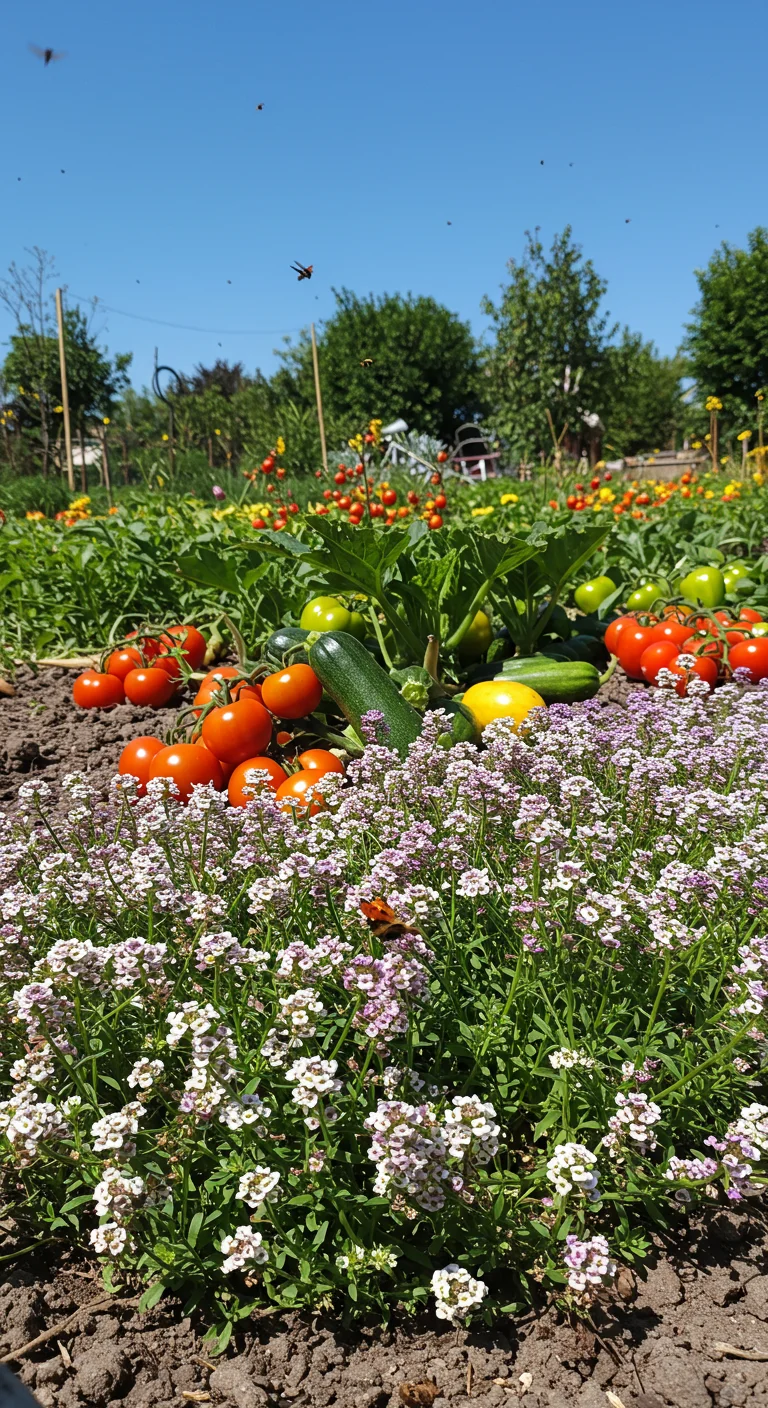
Sweet Alyssum (Lobularia maritima) is a charming and fragrant companion plant that thrives in vegetable gardens, attracting beneficial insects such as pollinators and predatory wasps. Its delicate, small white, lavender, or yellow flowers not only enhance the aesthetic appeal of your garden but also serve a functional purpose by repelling aphids and other pests. Planting Sweet Alyssum in borders or interspersed among your vegetables will create a vibrant, scented environment that encourages a healthy ecosystem. This hardy annual is easy to grow, requiring full sun to partial shade and moist, well-drained soil. Regular deadheading will promote continuous blooms, ensuring that your garden remains beautiful and inviting throughout the growing season.
8. Cosmos: Attracting Beneficial Insects
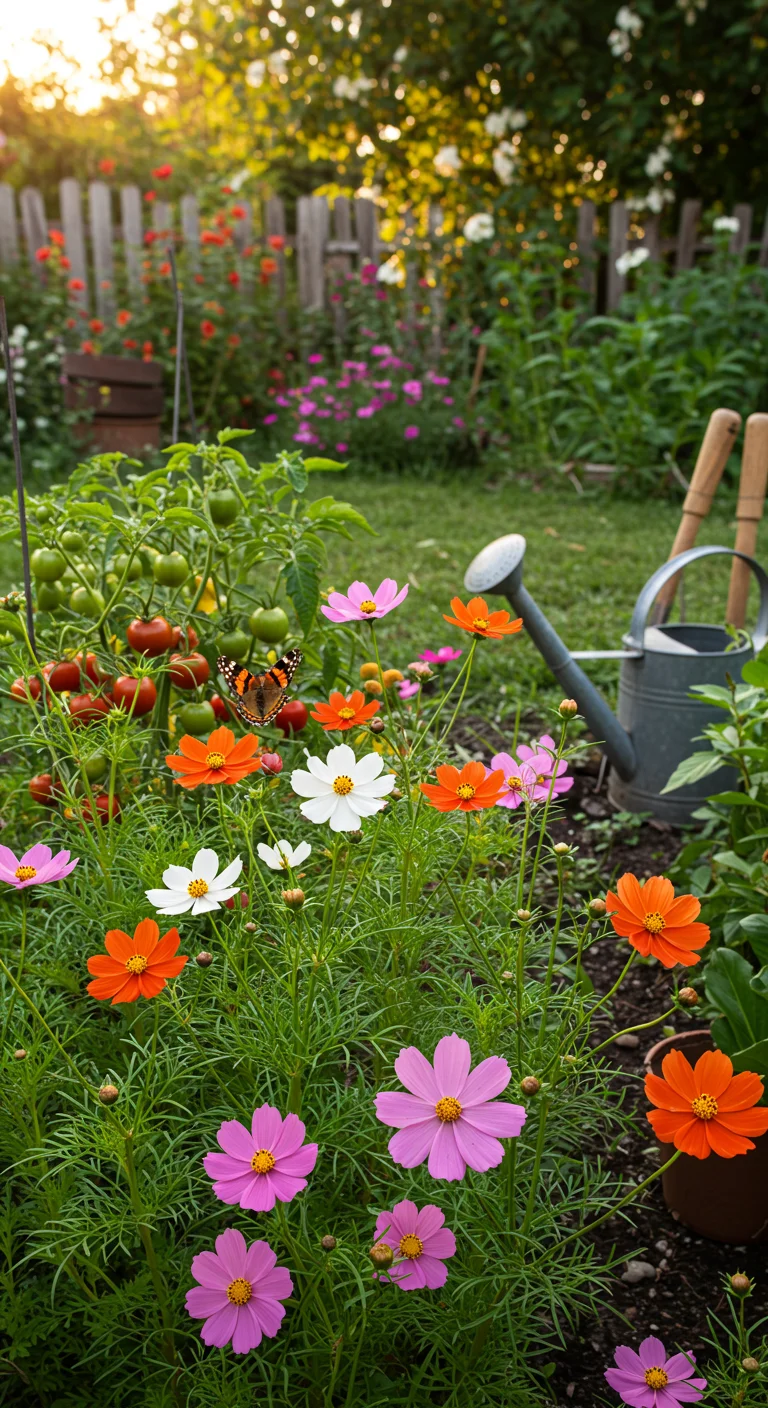
Cosmos flowers are not only beautiful additions to your vegetable garden but also serve a vital role in attracting beneficial insects like bees, butterflies, and predatory wasps. These vibrant blooms thrive in sunny environments and can tolerate poor soil, making them easy to grow alongside your vegetables. Their open, daisy-like flowers provide a rich source of nectar and pollen, encouraging pollinators to visit your garden, which in turn boosts the productivity of your crops. Additionally, Cosmos can help control pests by luring in insects that prey on common garden pests, reducing the need for chemical interventions. Planting Cosmos in borders or intermingling them with your vegetables can create a natural, thriving ecosystem that supports both your plants and the local wildlife.
9. Bee Balm: A Magnet for Pollinators
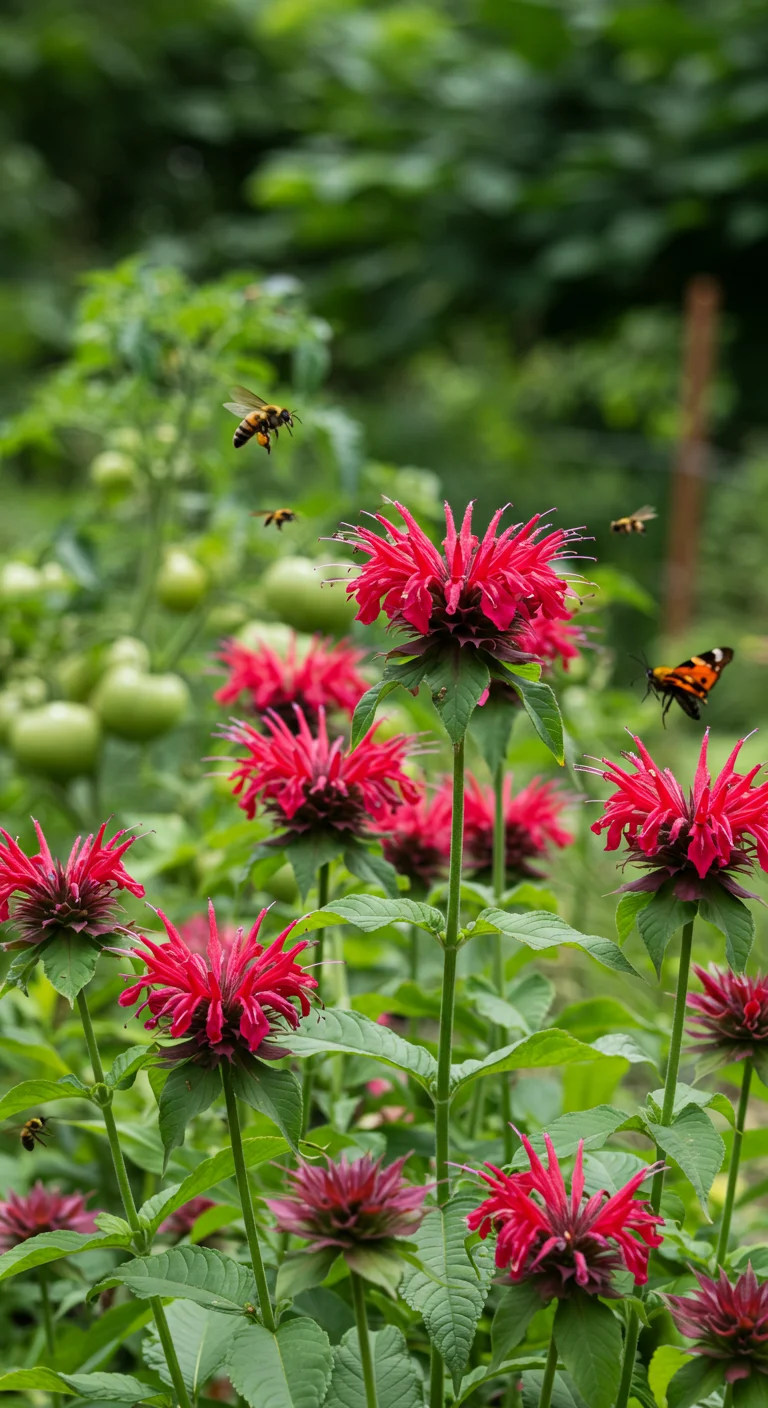
Bee Balm, also known as Monarda, is a stunning addition to any vegetable garden, renowned for its vibrant blooms and ability to attract a myriad of pollinators, including bees, butterflies, and hummingbirds. This perennial herb thrives in well-drained soil and full sun to partial shade, making it versatile for various garden layouts. With a blooming period stretching from mid-summer to early fall, Bee Balm not only adds color and fragrance to the garden but also supports the vital ecosystem of pollinators that enhance vegetable yields. Additionally, its aromatic leaves can be used in herbal teas, providing both aesthetic and practical benefits. Incorporating Bee Balm into your garden not only beautifies the space but creates a thriving environment for essential pollinators, ultimately boosting your vegetable production.
10. Lavender: Aromatic Ally in the Vegetable Patch
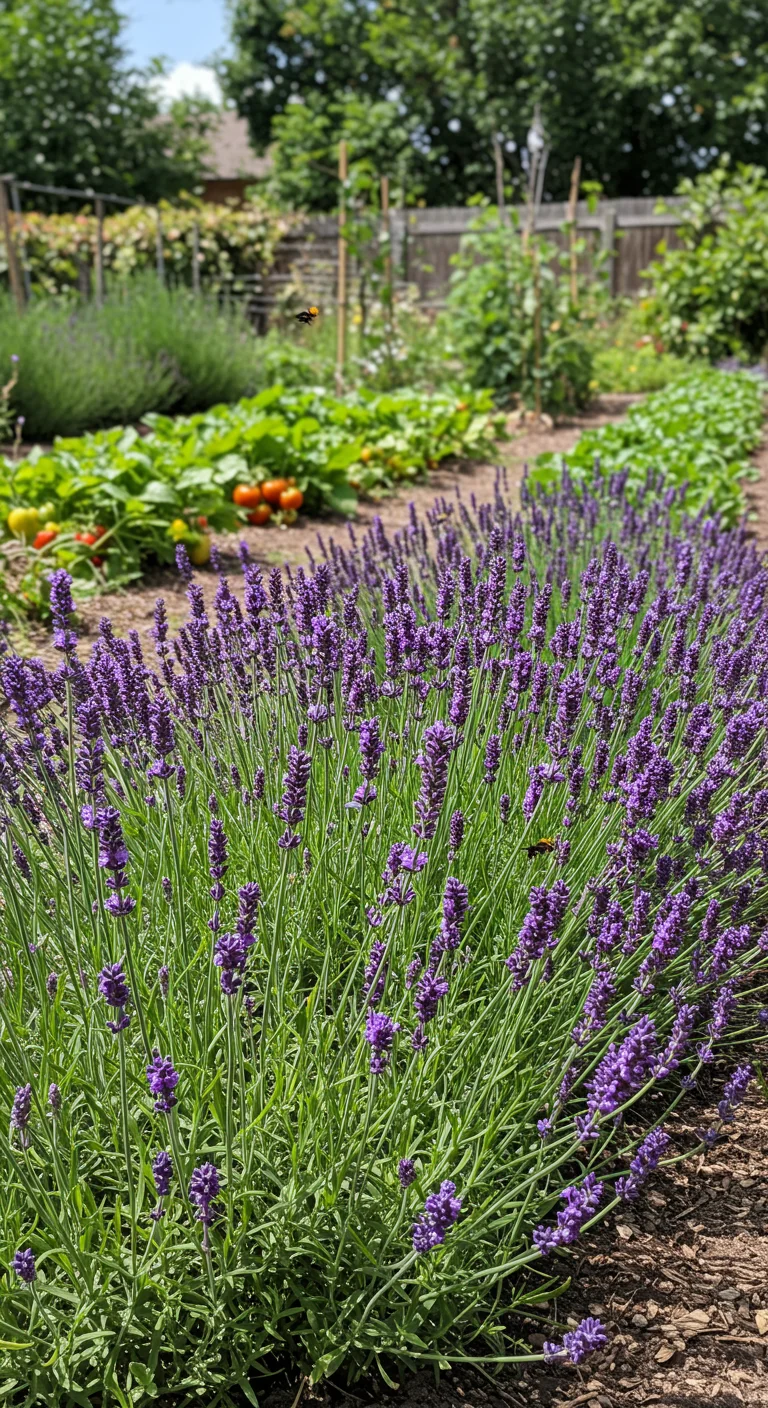
Lavender is not only a fragrant addition to your vegetable garden, but it also serves multiple beneficial purposes. This perennial herb attracts beneficial pollinators like bees and butterflies, which are essential for the pollination of nearby vegetables. Its aromatic oils can deter pests such as aphids, whiteflies, and even rabbits, helping to protect your crops naturally. In addition to its pest-repelling qualities, lavender thrives in well-drained soil and full sun, making it an excellent companion plant for tomatoes, peppers, and other sun-loving veggies. To maximize its benefits, plant lavender in clusters to create a visually appealing border while enhancing the health and productivity of your vegetable patch.
11. Peas and Flowers: A Beautiful Edible Duo
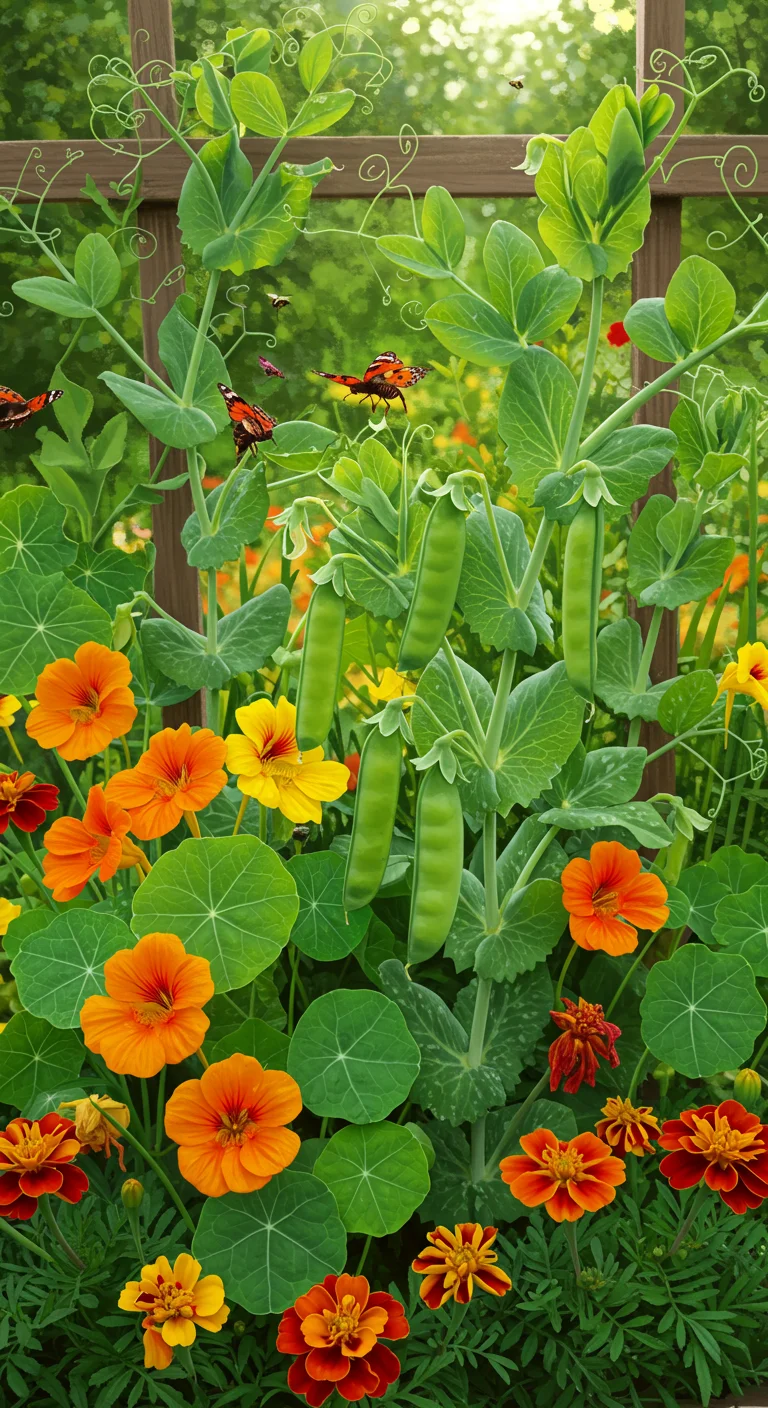
Peas and flowers make a stunning and functional combination in your vegetable garden. Planting edible flowers such as nasturtiums or marigolds alongside peas not only enhances the visual appeal of your garden but also offers practical benefits. These flowers can attract beneficial pollinators like bees and butterflies, which are essential for the successful pollination of your pea plants. Additionally, nasturtiums serve as a natural pest deterrent, helping to protect your peas from aphids and other common pests. As a bonus, both nasturtiums and marigolds are edible, providing colorful garnishes for your dishes. Integrating this beautiful edible duo in your garden will create a vibrant space while promoting a healthy and productive vegetable yield.

